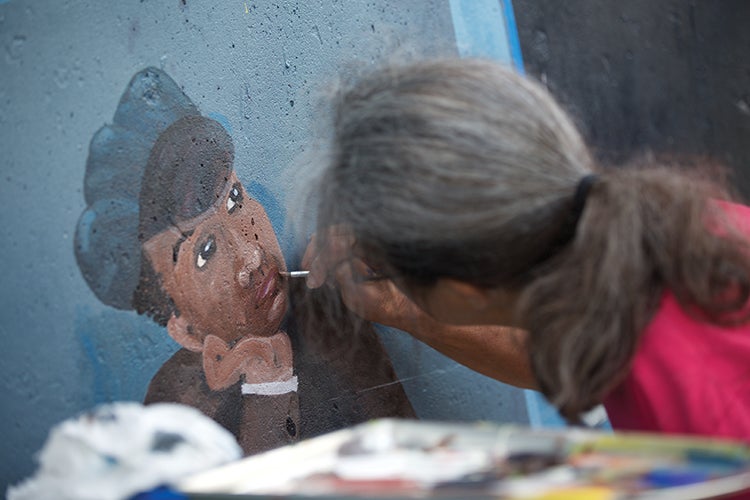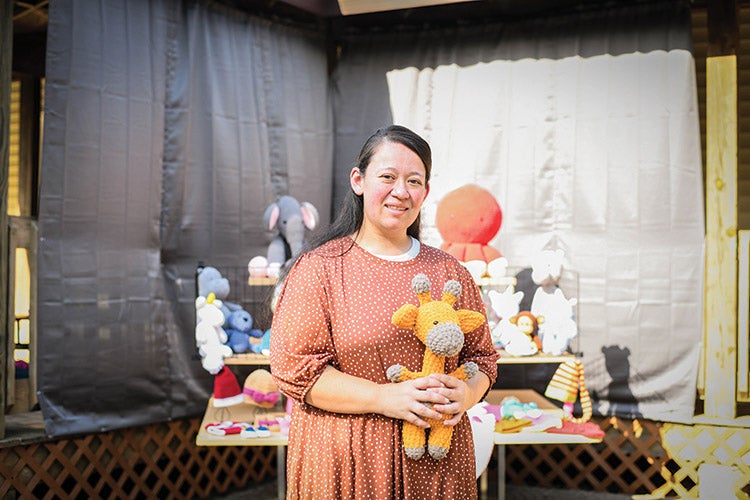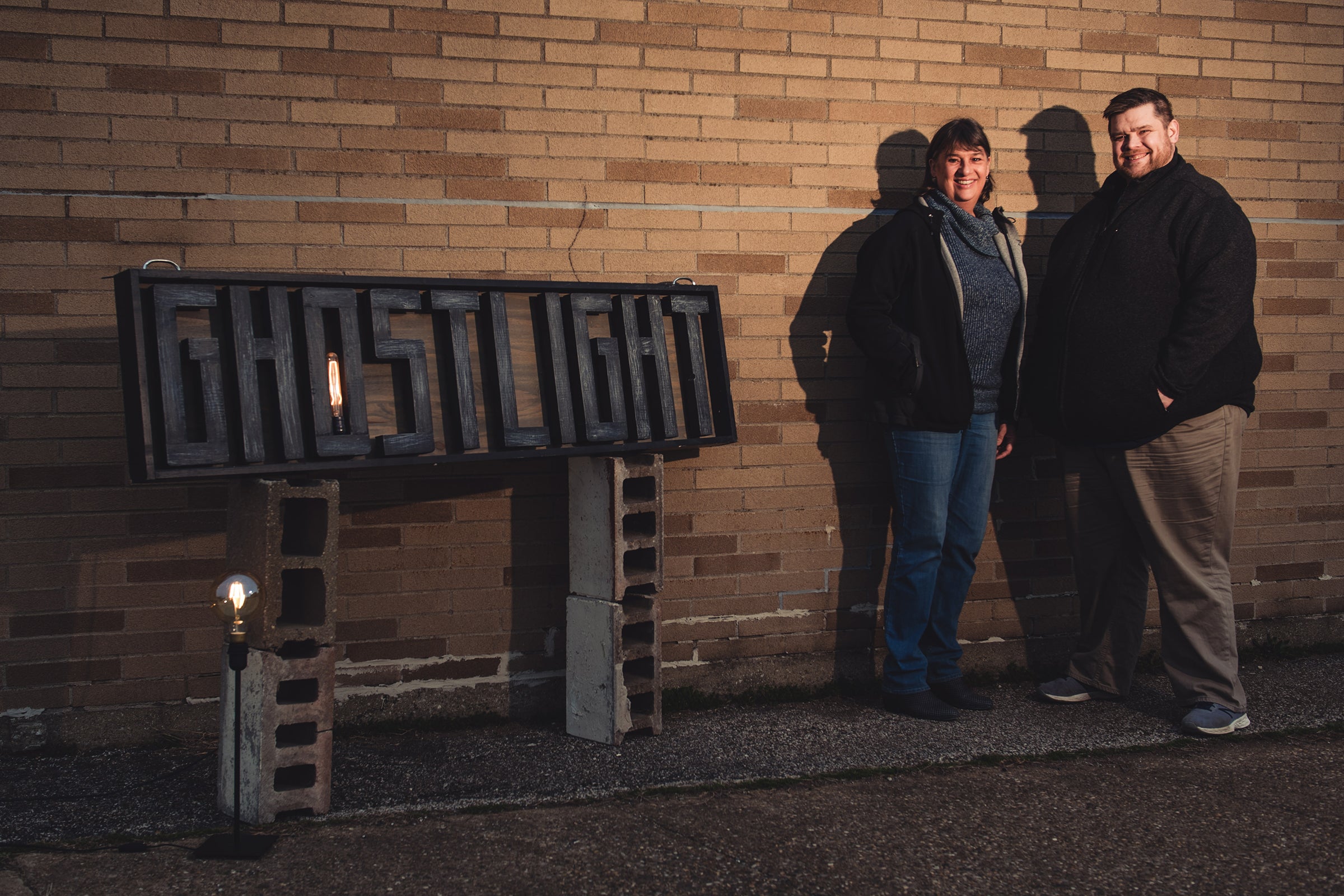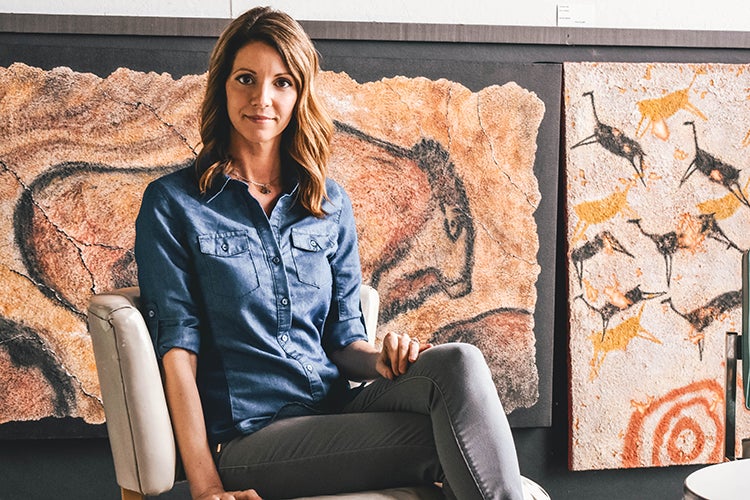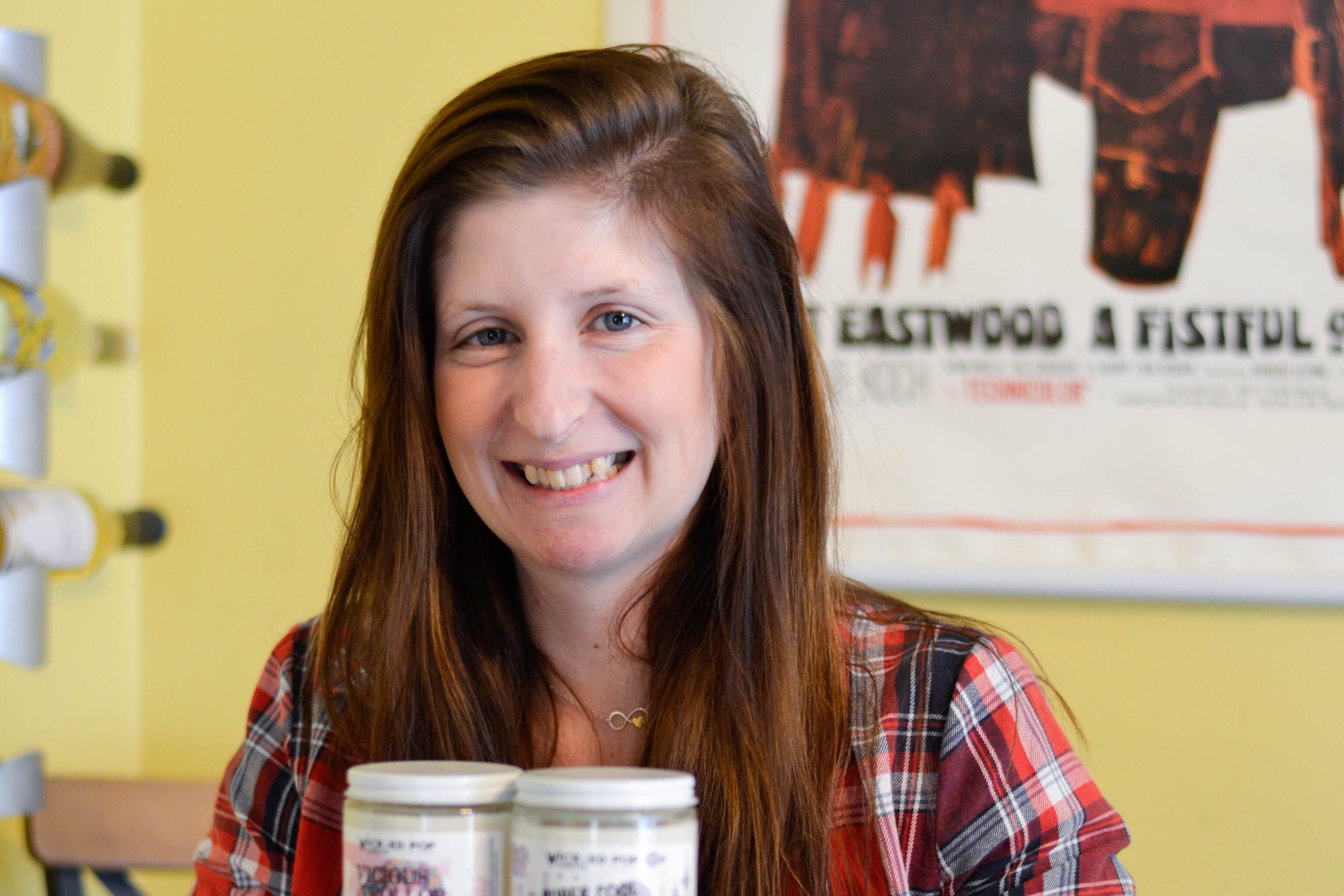Standing under the wooden plank of a scaffold, Ruth Andrews uses a paintbrush to depict the epic train ride orphans from New York City took to Dowagiac throughout the mid to late 1800s and the early 1900s.
The mural runs on the east outside wall of the local post office, which is on Pennsylvania Street. It spans the length of at least 10 parked cars. On the wall, the journey of the orphans takes place from left to right, starting with the slum-like conditions they lived in while in New York City.
“It’s kind of an Oliver Twist-ish world,” Ruth says. “People didn’t really take the kids’ situation seriously. They were a nuisance and they were called ‘street Arabs.’”
The left side of the wall is outlined but has yet to be touched by a brush. Currently being painted is the middle of the mural. Ruth is touching up the red front wheel of the locomotive transporting the orphans to the Midwest.
“You see they’re looking out the windows and they’re kind of wistful, hopeful, apprehensive, and maybe a little sad,” Ruth says. “You know that they don’t quite know their future.”
The right side of the mural is completely painted. Here, orphan boys and girls are shown happily going to school and church. They have not been adopted, per se. Instead, a local farm owner would have ‘signed for them’ and the kids would essentially work in exchange for food and shelter. This may not sound like an ideal situation, but it may have been the first time they had ever been able to let their guard down — trying to survive no longer dominated their existence.
“They’re playing like children,” Ruth says, “probably for the first time in their lives.”
During the week, Ruth works on the mural every morning and almost every night in hopes of completing the mural by the end of summer. That way she can spend September touching it up. Given its size, finishing the mural in that time span would be difficult on her own. However, she has help.
To her left are two retired women sitting on the ground painting. The sisters, who help Ruth twice a week, are two of several dozen community members who have volunteered to work on the project thus far. But she is always willing to have more.
While she is painting, a man who had been waiting in his car while his wife attended an eye doctor appointment approaches. His long gray hair sticks out on the sides of his black cap. He wears a dark T-shirt and matching pants.
“Nice job, folks,” says the man.
“Oh, thank you,” Ruth says. “Are you familiar with the orphan train story?”
“No. No, I didn’t even know what it was.”
“Well, the very first orphan train came to Dowagiac and that’s what we’re painting.”
Ruth continues to explain the project to the man. At the end of their conversation, she invites him to come back and then he returns to his wife.
“I share what we’re doing with folks and sometimes they come back and paint,” Ruth says. “It’s kind of addicting. Once you do it you want to keep going and see how it’s all going to turn out.”
The practice of inviting community members to help her paint is something Ruth first did back in the 1970s, when she painted her first mural at Elkhart’s Oaklawn Psychiatric Center. It was indoors and day treatment patients helped her throughout the painting process.
Since then, she has done a handful of other murals, where she has often invited locals to help her. The reason for this is not necessarily because she needs assistance, but because it helps with people’s perception of her art.
“When you do public art, there’s always people who don’t like it,” Ruth says. “So in order to have people understand it, which helps them appreciate it a little bit more, they need to know what it’s all about. They need to know the story and what the motivation is for having it. The more people that help with it, the more [community members] own it and it really becomes a piece of the community.”
Ruth will invite almost anyone to paint with her, even journalists with shaky hands.
“We have a wide variety of people who have helped us on this project,” Ruth says. “From accomplished artists to people who just say ‘just give me something that I can paint all one color.’”
In addition to painting the mural, Ruth works part-time as a secretary at the United Presbyterian Church in her hometown of Cassopolis. As a mostly retired grandmother, these are the only two paying jobs that she has at the moment, but she will occasionally take on other illustration projects and she loves to paint with water colors.
For as much as she enjoys painting, it wasn’t the type of art she thought she would be doing when she returned to Michiana, after having lived in Chicago and attending Columbia College.
During her time as a filmmaker, she was able to achieve some success and even got one of her films, “Incumbent Mama,” shown at Cannes in 1974.
“It was an experimental film,” Ruth says, “so don’t get too excited. It was silent and it was about 20 minutes long.”
Her primary reason for coming back was to decompress and get back on her feet after traveling in South America for six months.
“I thought, ‘I’ll just come back home and sort myself out,’” Ruth says. “Then I got married and had three kids.”
She’s been in the area ever since.
As she continues to paint a few more people come up to see how the projects going and she encourages them to volunteer. Once the sun starts beating on her neck, she decides it’s time to pack up and leave. But, of course, she’ll be back — bringing the community with her.
Photos by ANN REIFF

